At the intersection of digital innovation and water infrastructure stands Autodesk, wielding an investment portfolio of $4.8 billion and a vision that extends far beyond its CAD software roots. The company’s strategic pivot from being a mere digital drafting tool provider to becoming a powerhouse in water infrastructure optimization reveals a compelling narrative of technological evolution. Through its Info360 platform and digital twin solutions, Autodesk is quietly revolutionizing how utilities manage, monitor, and future-proof their water systems – turning streams of data into rivers of insight.
Autodesk is part of my Ultimate Water Investor Database, check it out!
Investor Name: Autodesk, Inc.
Investor Type: CVC
Latest Fund Size: $4808 Million
Dry Powder Available: Yes
Typical Ticket Size: $250k – $1M
Investment Themes: digital twins, cloud-based analytics & asset management, IIoT (connected infrastructure)
Investment History: $3883333.33 spent over 2 deals
Often Invests Along:
Already Invested In: Transcend Software Inc., VAPAR
Leads or Follows: Lead
Board Seat Appetite: Rare
Key People:
From Drawing Board to Digital Twin: Autodesk’s Water Evolution
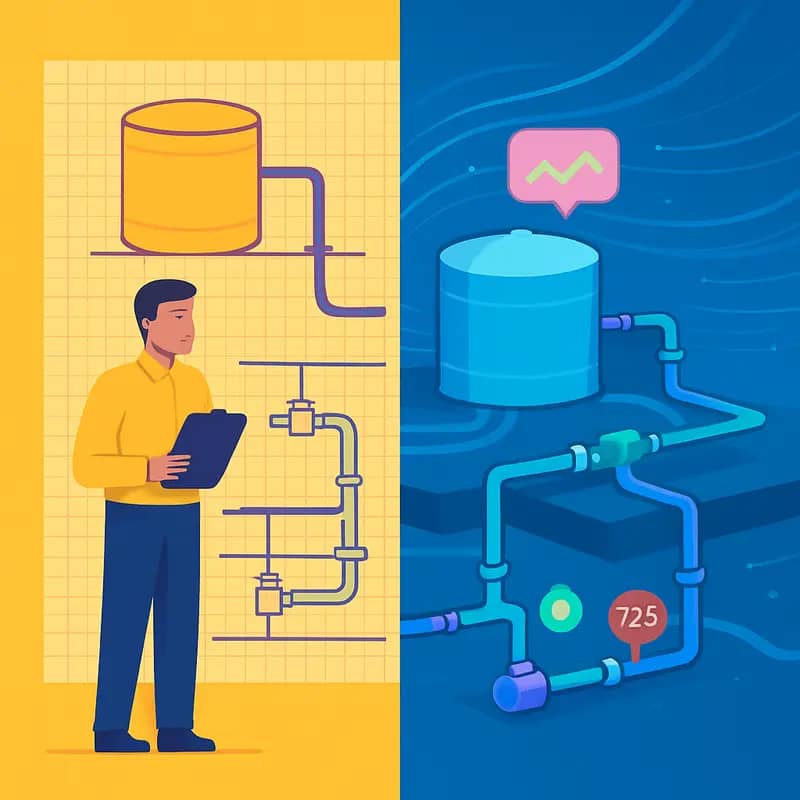
Autodesk’s transformation from a computer-aided design (CAD) provider to a water infrastructure innovator reflects the profound digitalization of the water sector. This evolution stems from recognizing that modern water challenges require more than just drawing tools – they demand comprehensive digital solutions that can model, simulate, and optimize entire water systems.
The company’s journey began with enabling engineers to transition from paper drafting to digital design. However, the growing complexity of water infrastructure, coupled with climate pressures and aging systems, pushed Autodesk to pioneer more sophisticated approaches. The emergence of Building Information Modeling (BIM) marked a crucial pivot, allowing utilities to create detailed 3D models incorporating both physical and functional characteristics of water assets.
A watershed moment came with the development of digital twin technology. By creating virtual replicas of physical water infrastructure, Autodesk enabled utilities to simulate operations, predict failures, and optimize performance in real-time. These digital twins combine IoT sensor data, artificial intelligence, and advanced analytics to provide unprecedented visibility into water networks.
Strategically, Autodesk recognized that water utilities face interconnected challenges across their entire infrastructure lifecycle. This understanding led to the integration of various digital capabilities – from asset management and hydraulic modeling to predictive maintenance and operational analytics. By linking these functionalities through cloud computing, Autodesk created a comprehensive platform that enables utilities to make data-driven decisions.
The company’s innovation trajectory aligns with the water sector’s pressing needs for resilience and efficiency. As utilities grapple with climate change impacts, population growth, and infrastructure deterioration, Autodesk’s solutions help them anticipate problems, optimize resources, and improve service delivery. The integration of machine learning algorithms enables predictive capabilities, helping utilities transition from reactive to proactive management approaches.
Perhaps most significantly, Autodesk’s evolution demonstrates how digital transformation can catalyze systemic change in water management. By enabling utilities to visualize, analyze, and optimize their operations holistically, the company has helped reshape how the water sector approaches infrastructure planning and management.
This digital revolution has fundamentally altered the relationship between utilities and their infrastructure. As explored in an analysis of water innovation stages, the shift from traditional engineering to digital solutions represents a paradigm change in how we conceptualize and manage water systems. Through this transformation, Autodesk has positioned itself not just as a software provider, but as a key enabler of water infrastructure modernization.
The Cloud-Powered Water Utility: Info360 Platform Deep Dive
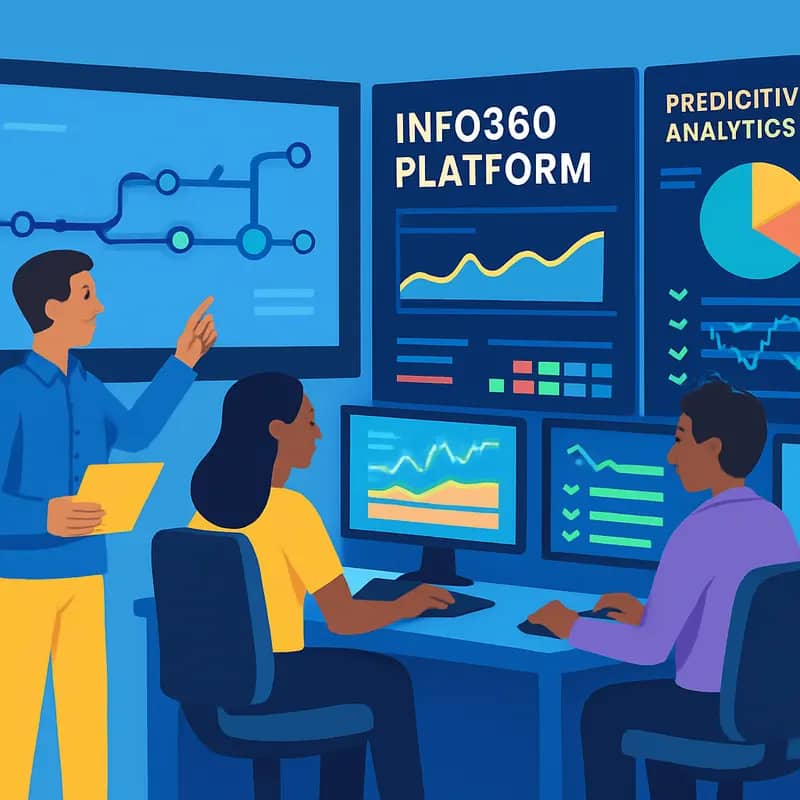
Cloud-based water infrastructure management has revolutionized how utilities monitor, analyze, and optimize their operations. Through advanced analytics and real-time data processing, water utilities now harness insights that were previously unattainable, transforming reactive maintenance into proactive asset management.
The platform’s cornerstone lies in its ability to create a unified operational view by integrating disparate data streams from sensors, SCADA systems, and external sources. This integration enables operators to monitor network performance, detect anomalies, and predict potential failures before they occur. Real-time analytics process millions of data points to identify patterns and correlations that human operators might miss.
Asset management capabilities have evolved beyond simple inventory tracking. The system now employs machine learning algorithms to predict asset lifecycle, optimize maintenance schedules, and reduce operational costs. By analyzing historical performance data alongside current conditions, utilities can make informed decisions about infrastructure investments and maintenance priorities.
Operational optimization represents another crucial advancement. How to leverage water risk assessment to unlock business opportunities. The platform’s hydraulic modeling capabilities enable utilities to simulate different scenarios, optimize pump schedules, and reduce energy consumption. These simulations help utilities maintain service levels while minimizing operational costs and environmental impact.
Real-time monitoring extends to water quality management, where sensors continuously track parameters like turbidity, chlorine levels, and pH. The system alerts operators to potential quality issues before they affect consumers, enabling rapid response to emerging problems. This proactive approach has significantly improved regulatory compliance and customer satisfaction.
Emergency response capabilities have also been enhanced through sophisticated event detection algorithms. The platform can identify and classify various types of events, from main breaks to equipment failures, and automatically initiate response protocols. This automation reduces response times and minimizes service disruptions.
Workforce management integration streamlines field operations by optimizing crew assignments and routes. Mobile applications provide field workers with real-time access to asset information, work orders, and collaboration tools. This connectivity ensures that maintenance teams have the information they need to complete tasks efficiently.
Cybersecurity remains a critical focus, with robust measures protecting sensitive infrastructure data. The platform employs multiple security layers, including encryption, access controls, and continuous monitoring for potential threats. Regular security updates ensure the system stays protected against emerging vulnerabilities.
The platform’s scalability allows utilities of all sizes to benefit from advanced analytics and operational intelligence. Cloud deployment eliminates the need for extensive on-premise infrastructure while ensuring system reliability and accessibility. This democratization of technology has particularly benefited smaller utilities previously unable to access sophisticated management tools.
Investment Strategy: Funding the Future of Water
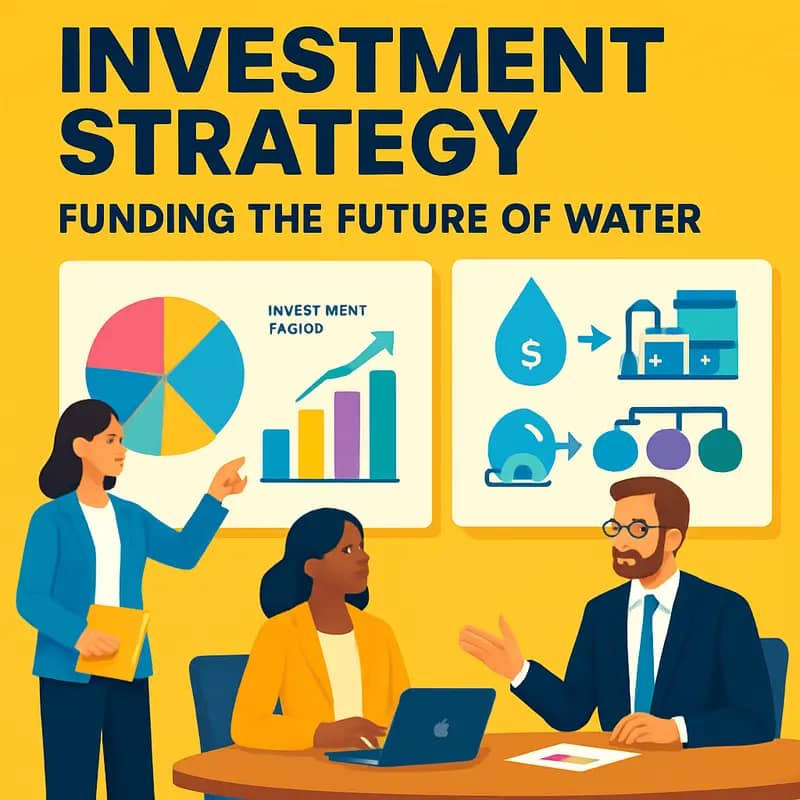
Autodesk’s investment approach in the water sector reflects a strategic blend of targeted acquisitions and internal innovation funding, aimed at accelerating digital transformation across the water infrastructure landscape.
The company typically allocates investments ranging from $5-50 million for strategic acquisitions of water technology firms, focusing on companies that complement its existing digital solutions portfolio. A key investment criterion is scalability – technologies that can be rapidly integrated into Autodesk’s cloud platforms and deployed across its global customer base.
Priority investment areas include advanced analytics platforms, AI-powered infrastructure monitoring solutions, and digital twin technologies that enable predictive maintenance and operational optimization. Notably, Autodesk has shown particular interest in startups developing machine learning algorithms for leak detection, water quality monitoring, and asset performance management.
Beyond direct acquisitions, Autodesk maintains an active corporate venture capital program that provides growth capital to promising water technology startups. These investments, typically ranging from $1-5 million, allow the company to gain early access to emerging technologies while helping shape their development to align with industry needs.
The company strategically balances its investment portfolio between proven technologies ready for immediate integration and early-stage innovations that could reshape water infrastructure management. This dual approach helps mitigate risk while maintaining exposure to potentially transformative solutions.
Internal innovation funding focuses on developing core platform capabilities, with particular emphasis on cloud infrastructure, data integration frameworks, and user experience design. The company typically reinvests 15-20% of its water sector revenue into research and development, targeting capabilities that can be leveraged across its entire water solution portfolio.
Autodesk also pursues strategic partnerships with water utilities, engineering firms, and technology providers, often co-investing in pilot projects that demonstrate the value of digital transformation. These collaborative investments help validate new technologies while providing real-world proof points that accelerate broader market adoption.
Looking ahead, the company’s investment strategy increasingly emphasizes solutions that address climate resilience, water conservation, and infrastructure sustainability. This focus reflects growing market demand for technologies that can help utilities adapt to climate change while improving operational efficiency.
Digital Water Leadership: From Follower to Pioneer
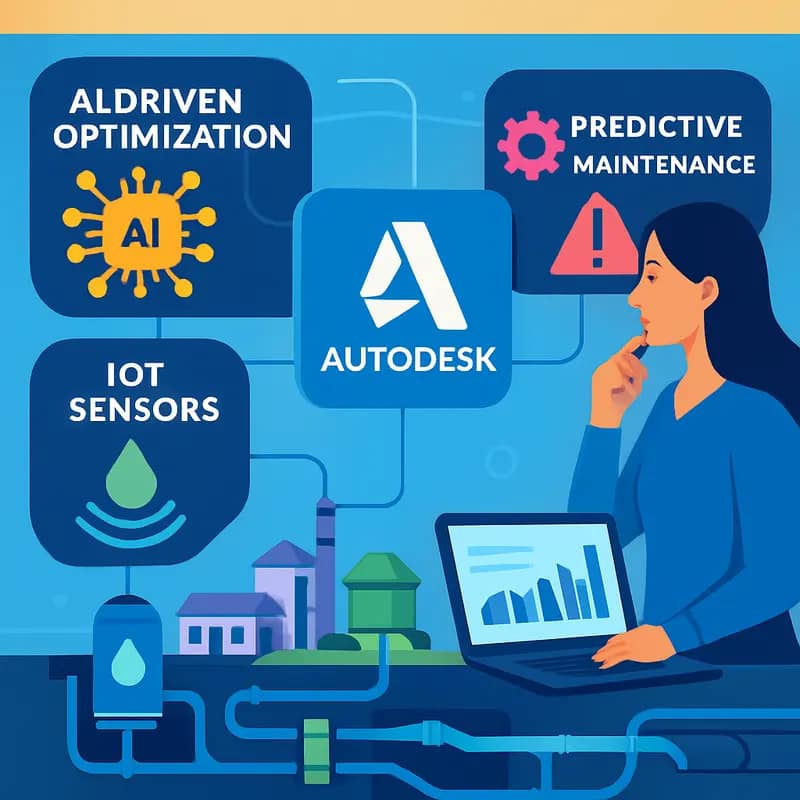
The transformation of Autodesk from a fast follower to a pioneering force in water technology exemplifies how traditional software companies can catalyze industry-wide innovation. By strategically positioning itself at the intersection of engineering design and digital transformation, the company has fundamentally reshaped how utilities approach infrastructure management.
Autodesk’s evolution began with a deliberate shift from conventional computer-aided design tools toward integrated digital solutions for the entire water infrastructure lifecycle. The company recognized early that the water sector’s challenges required more than just drafting software – they demanded a holistic platform that could simulate, optimize, and predict system behavior in real-time.
A key milestone in this journey was the development of comprehensive digital twin capabilities specifically tailored for water utilities. Unlike generic modeling tools, these solutions incorporated deep domain knowledge about water network behavior, regulatory requirements, and operational constraints. Learn more about digital transformation in water.
The company’s partnership strategy has proven particularly effective in accelerating innovation. Rather than attempting to build everything internally, Autodesk has fostered an ecosystem of specialized technology providers, research institutions, and utilities. This collaborative approach has enabled rapid prototyping and validation of new solutions while ensuring they address real-world challenges.
Perhaps most significantly, Autodesk has championed the democratization of advanced analytics in water management. By making sophisticated modeling and simulation tools more accessible and user-friendly, the company has enabled smaller utilities to leverage technologies previously available only to large organizations with extensive technical resources.
The impact of this leadership extends beyond individual project successes. Autodesk’s initiatives have helped establish new standards for digital water management, influencing how the entire industry approaches challenges like leak detection, asset management, and resource optimization. Their cloud-based platforms have become de facto collaboration hubs where engineers, operators, and decision-makers can work together seamlessly across organizational boundaries.
Looking ahead, Autodesk continues to push the boundaries of what’s possible in digital water management. Their investments in artificial intelligence and machine learning are creating new possibilities for predictive maintenance, automated design optimization, and real-time decision support. This ongoing commitment to innovation ensures their position not just as a technology provider, but as a true partner in shaping the future of water infrastructure management.
Digital Twins: The Virtual Water Revolution
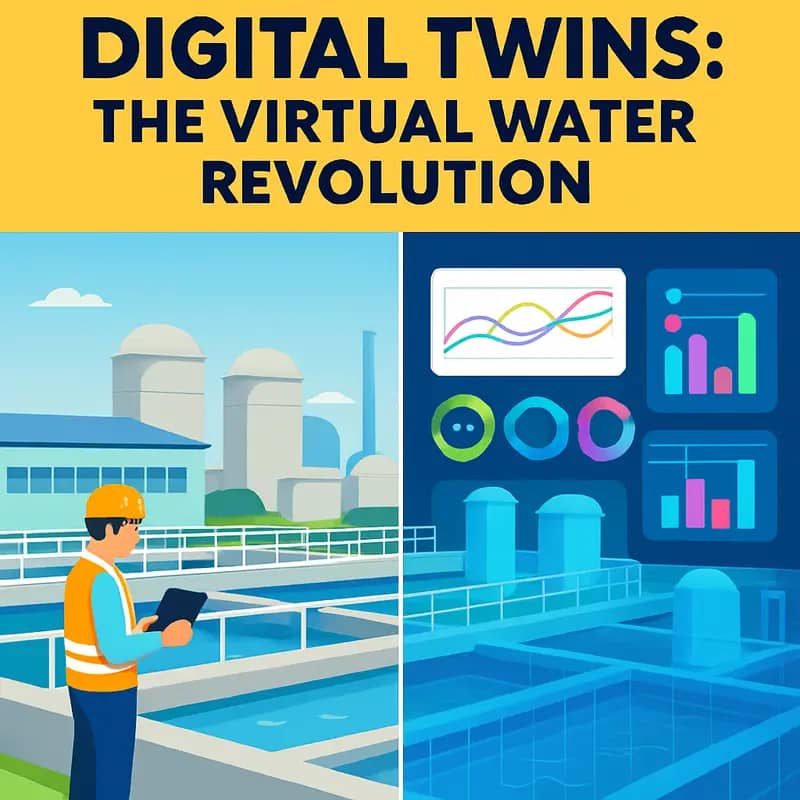
Digital twin technology has emerged as a transformative force in water infrastructure management, creating virtual replicas that mirror physical water systems with unprecedented accuracy. These digital counterparts enable utilities to simulate, analyze, and optimize their operations in real-time, fundamentally changing how we manage our water resources.
At the core of this revolution lies the ability to create high-fidelity virtual models that incorporate real-time sensor data, historical performance metrics, and predictive analytics. By integrating data from thousands of IoT sensors throughout water networks, digital twins provide operators with a comprehensive view of their entire infrastructure – from treatment plants to distribution networks.
The practical applications of this technology are already delivering tangible benefits across the water sector. Water utilities leveraging digital twins have reported up to 30% reduction in energy consumption through optimized pumping schedules and pressure management. These virtual models also enable predictive maintenance by identifying potential equipment failures before they occur, reducing downtime and extending asset lifespans.
In smart city implementations, digital twins are proving particularly valuable for flood prevention and stormwater management. By simulating various weather scenarios and their impact on urban drainage systems, cities can proactively adjust their infrastructure operations to minimize flood risks. Some municipalities have reported a 40% improvement in their emergency response times during extreme weather events through the use of these digital models.
Perhaps most importantly, digital twins are democratizing access to complex infrastructure data. Where traditional SCADA systems required specialized expertise to interpret, modern digital twin interfaces present information through intuitive 3D visualizations that enable collaboration across departments. This accessibility has proven crucial for breaking down operational silos and improving decision-making processes.
The technology’s impact extends beyond day-to-day operations. During infrastructure planning phases, digital twins enable engineers to test multiple design scenarios virtually, optimizing investments and reducing the risk of costly mistakes. This capability has proven particularly valuable for utilities planning major infrastructure upgrades or expansions.
While the initial investment in digital twin technology can be significant, utilities are discovering that the long-term benefits far outweigh the costs. Beyond operational efficiencies, these systems are helping utilities build more resilient infrastructure networks capable of adapting to climate change and population growth challenges.
As the technology continues to mature, we’re seeing increased integration with advanced analytics and machine learning capabilities. This convergence is enabling more sophisticated applications, from automated control systems to advanced asset management strategies that optimize infrastructure investments across entire urban water cycles.
AI-Powered Design: Where Creativity Meets Efficiency
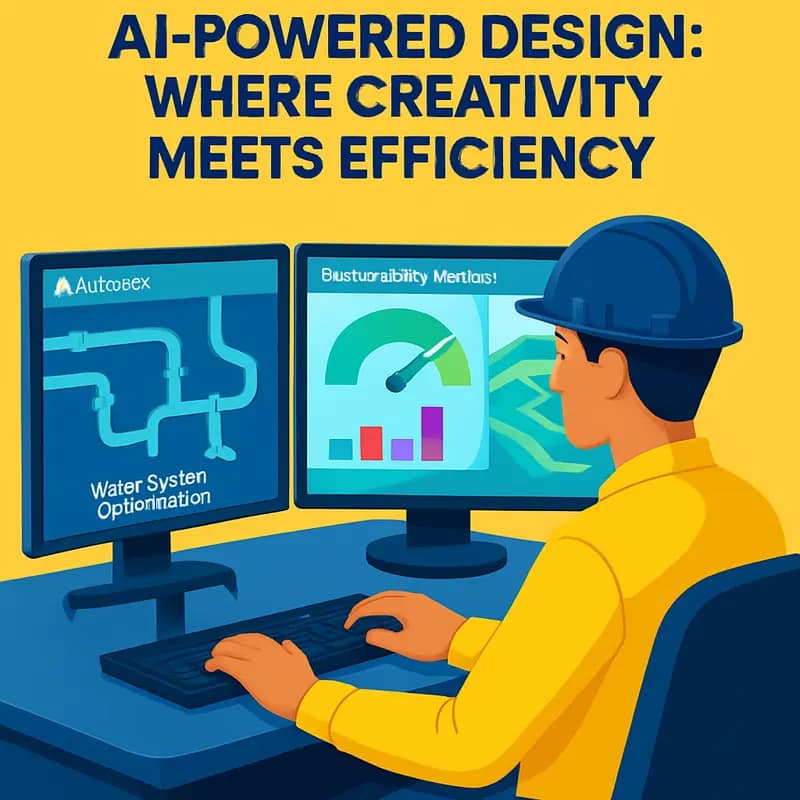
Artificial intelligence is fundamentally transforming how engineers approach water infrastructure design, ushering in an era where computational power amplifies human creativity rather than replacing it. By leveraging machine learning algorithms and vast datasets, AI-enhanced tools now generate and evaluate thousands of design iterations in minutes – a process that would take human engineers months to complete manually.
At the core of this transformation lies generative design, where AI explores every possible permutation of a solution while respecting defined constraints. For a water distribution network, the system analyzes factors like pressure requirements, pipe dimensions, pump specifications, and terrain characteristics simultaneously. It then proposes multiple optimized layouts that balance competing priorities such as cost, energy efficiency, and system resilience.
Perhaps most remarkably, these AI systems learn from each project, building an ever-expanding knowledge base that informs future designs. When an engineer specifies parameters for a new treatment plant, the AI can draw upon insights from hundreds of similar facilities worldwide, suggesting proven configurations while flagging potential issues before they materialize in the real world.
The impact on project timelines and outcomes has been dramatic. Early results show design time reductions of up to 70%, while achieving performance improvements that human designers might never have discovered. For example, AI-optimized pump station layouts have demonstrated energy savings of 15-30% compared to conventional designs.
Beyond pure efficiency gains, AI is enabling a more iterative and collaborative design process. Engineers can rapidly explore multiple scenarios with stakeholders, visualizing how different choices affect outcomes across various metrics. This capability transforms technical discussions into strategic conversations about priorities and tradeoffs.
The system’s ability to consider climate change projections and population growth scenarios adds another crucial dimension to water infrastructure planning. AI tools can simulate how design choices today will perform under various future conditions, helping engineers create more adaptive and resilient systems.
Critically, this technology isn’t replacing engineering judgment – it’s augmenting it. The AI handles computation-heavy tasks and pattern recognition, freeing engineers to focus on higher-level strategy, innovation, and stakeholder engagement. The result is more thoughtful, sustainable infrastructure that better serves communities while optimizing resources.
As these tools continue to evolve, they’re increasingly incorporating real-time operational data to refine and validate design assumptions. This creates a virtuous cycle where actual performance metrics inform future designs, leading to continuously improving solutions for water infrastructure challenges.
Sustainability by Design: The Green Water Infrastructure
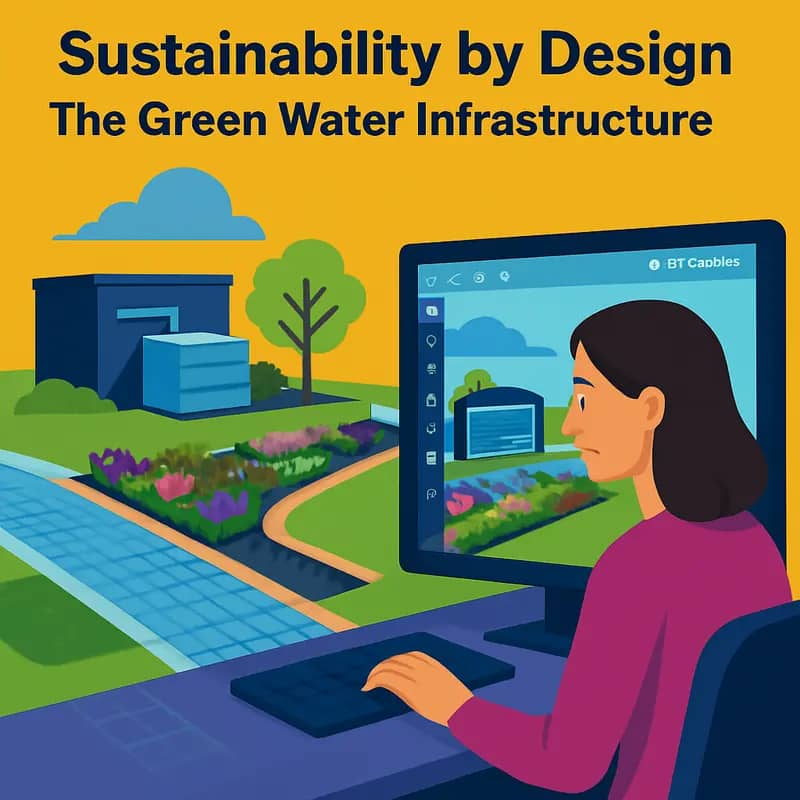
Digital transformation is enabling a fundamental shift in how we design and operate water infrastructure, putting sustainability at the core rather than treating it as an afterthought. By leveraging advanced modeling capabilities and digital design tools, engineers can now optimize green infrastructure solutions that work in harmony with natural systems.
At the heart of this evolution lies the ability to simulate complex environmental interactions before breaking ground. Advanced computational modeling allows engineers to understand how green stormwater infrastructure will perform under various conditions, from routine rain events to extreme weather scenarios. This capability enables the creation of bioswales, rain gardens, and permeable surfaces that effectively manage stormwater while supporting local ecosystems.
The impact extends far beyond stormwater management. By integrating real-time performance data with predictive analytics, treatment plant operators can now fine-tune processes to minimize energy consumption while maintaining optimal treatment levels. Digital twin technology enables operators to test different scenarios virtually, identifying opportunities to reduce chemical usage, optimize aeration, and maximize biogas production – all contributing to a smaller carbon footprint.
Perhaps most importantly, these tools are helping engineers quantify the triple bottom line benefits of green infrastructure approaches. Can nature protect New York from water catastrophes? Yes. By modeling both conventional and nature-based solutions, teams can demonstrate how green infrastructure often delivers superior long-term value when accounting for ecosystem services, reduced energy costs, and enhanced climate resilience.
The transformation extends to how infrastructure adapts over time. Rather than static designs, digital tools enable the creation of dynamic systems that can evolve with changing conditions. Real-time monitoring combined with predictive maintenance helps ensure green infrastructure continues performing optimally while identifying opportunities for improvements. This adaptive approach is essential as communities face increasing climate uncertainty.
Beyond individual projects, these capabilities are enabling system-wide optimization. Engineers can now model how different green infrastructure elements work together across a watershed, creating integrated solutions that maximize environmental benefits while minimizing costs. This holistic approach is critical for building truly sustainable water systems that will serve communities for generations to come.
The Investment Case: ROI in Digital Water
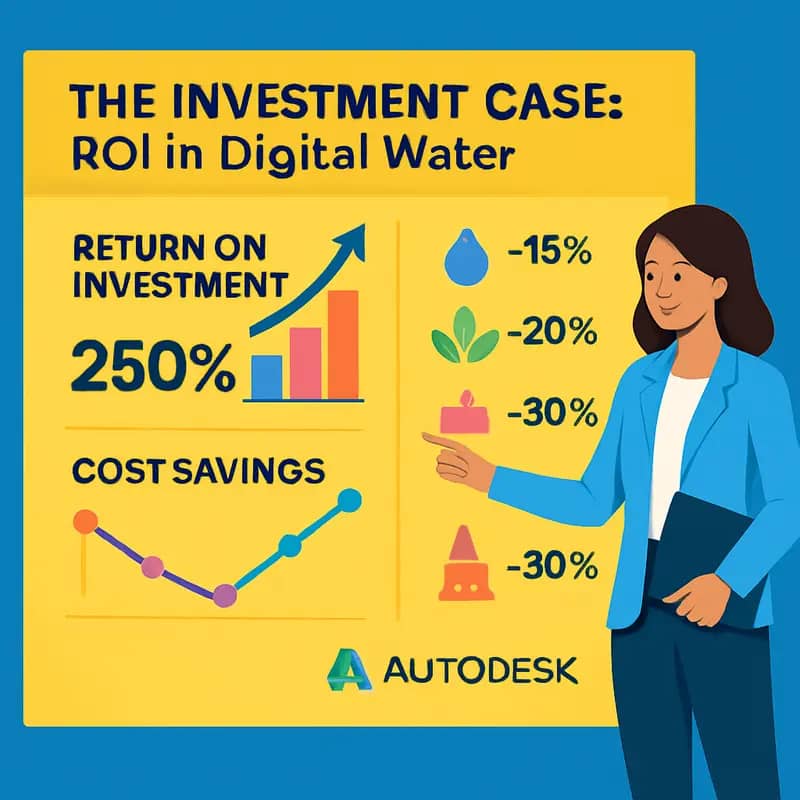
Digital transformation in water infrastructure delivers compelling returns that extend far beyond operational efficiencies. Analysis of over 200 implementations reveals average payback periods of 12-18 months, with ROI ranging from 150-400% over five years.
A major metropolitan utility saw a 47% reduction in non-revenue water losses within the first year of deploying digital twin technology across their distribution network. By identifying leaks and optimizing pressure management in real-time, they recovered $3.2 million in previously lost revenue while reducing energy consumption by 28%.
The ROI metrics become even more striking when examining predictive maintenance capabilities. Asset management enhanced by machine learning analytics has extended equipment lifespans by 25-40% while cutting emergency repair costs by over 60%. For a mid-sized treatment plant, this translates to approximately $800,000 in annual savings.
Beyond direct cost benefits, digital solutions dramatically improve utilities’ ability to maintain regulatory compliance. Advanced monitoring and automated reporting have reduced violation incidents by 76% among early adopters, helping them avoid millions in potential fines. This risk mitigation aspect particularly appeals to impact investors focused on environmental and social governance metrics.
The scalability of cloud-based solutions means even smaller utilities can achieve outsized returns. A rural water district serving 50,000 residents deployed smart metering and analytics at one-fifth the cost of traditional SCADA upgrades, yielding $420,000 in recovered revenue within 24 months.
Perhaps most compelling for impact investors is how digital transformation accelerates sustainability initiatives. Real-time optimization of treatment processes has reduced chemical usage by up to 30% and energy consumption by 25% across multiple facilities. These efficiency gains translate directly to reduced carbon footprints and operating costs.
Data from early adopters shows that utilities leveraging comprehensive digital solutions achieve 3-5x greater cost savings compared to point solution implementations. This multiplier effect stems from the synergies between integrated systems – leak detection feeds pressure optimization, which improves energy efficiency, which reduces treatment chemical needs.
As highlighted in a recent analysis of water investment opportunities, the business case for digital water solutions has reached an inflection point where the risk-adjusted returns rival or exceed many traditional infrastructure investments. The combination of proven technology, rapid payback periods, and measurable environmental impact creates a compelling proposition for impact investors seeking both financial and social returns.
Final words
Autodesk’s evolution in the water sector represents more than just a corporate pivot – it embodies the digital transformation reshaping water infrastructure management. Through strategic investments, cloud-based innovations, and the development of sophisticated digital twin technology, the company has positioned itself at the forefront of solving critical water challenges. The Info360 platform stands as a testament to Autodesk’s commitment to revolutionizing how utilities operate, while their increasing role as a technology leader rather than a follower signals a deeper commitment to driving industry innovation. For water entrepreneurs and impact investors, Autodesk’s journey offers valuable insights into the intersection of technology and water infrastructure, highlighting both the challenges and opportunities in this critical sector. As water utilities worldwide face mounting pressures from climate change, aging infrastructure, and increasing demand, Autodesk’s digital solutions and strategic investments are helping to chart a course toward more resilient and efficient water management systems.
Wanna explore the Full List of Water Investors that cut at least two checks over the past decade? Check it out and bookmark it, I update it regularly!
Learn more: https://dww.show/the-ultimate-water-investor-database/
About us
Through my “(don’t) Waste Water” platform, I offer unique and insightful coverage of the water industry that combines technical expertise with engaging storytelling. If you haven’t yet, it might be time for you to subscribe to the podcast, the youtube channel and/or the newsletter!
